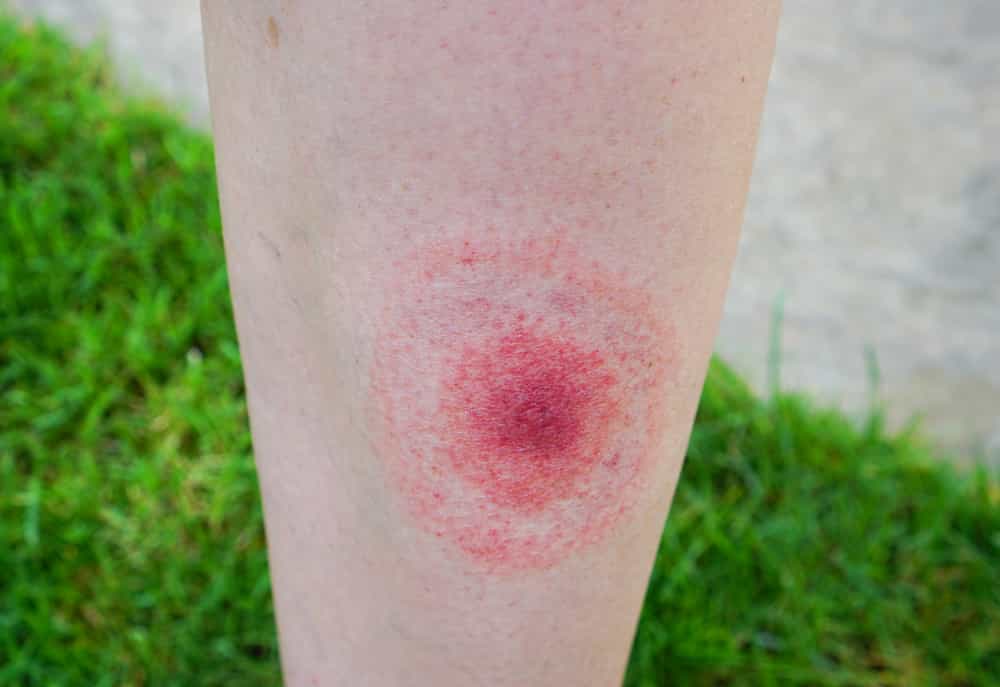Signs and symptoms

Let us review each stage of Lyme disease and list the most important signs and symptoms of each one.
In stage 1 Lyme disease, patients usually report these signs and symptoms:
- Erythema migrans: It is perhaps the most important sign in the early stage of the disease. It is a type of skin rash that starts around the area of the bite and then starts to expand. As the rash expands, some portions begin to clear, forming a characteristic series of concentric rings known as Bull’s Eye rash. But sometimes, erythema migrans does not have concentric circles and instead adopt a uniform color. This sign is often persistent for 2 or 3 weeks, and after disappearing, it can reappear in recurrent episodes. In some cases, there’s not only one lesion but multiple areas with Bull’s Eye rash. In other cases, the lesion is found in difficult to reach areas, and patients do not realize they had a rash in the first place.
- Flu-like symptoms: Half of the patients with Lyme disease start experiencing flu-like symptoms 1 week after being bitter by the infected tick. These symptoms typically include fatigue and muscle pain or myalgia in up to 80% of them. They also report joint pain (arthralgia), neck stiffness, and headaches.
- Redness and tearing of the eyes: This is the earliest ocular manifestation of Lyme disease. As noted above, the bacterium has a tropism for the eye as well, but in the early stage, this does not lead to any permanent damage.
